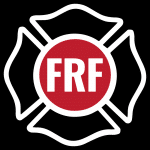Boosting Energy and Alertness: The Power of Coffee Naps for First Responders
Firefighters, EMTs, and Medics give yourself a boost in energy and performance with this napping technique.
As a first responder, firefighter, EMT, and/or paramedic, you selflessly dedicate your life and energy to helping others. This includes stressful and exhausting shifts and sleepless nights. Sleep deprivation can add up quickly, making it difficult to find the energy to perform on the fire/ rescue scene and at home as a parent or partner.
Many responders are turning to napping to help combat the fatigue of the job. Napping can significantly improve cognitive performance and decision-making abilities, reducing the risk of errors and accidents. Taking short naps also helps to alleviate stress and promote overall well-being, enabling first responders to maintain their physical and mental health.
One of the challenges with napping is finding the correct duration. Napping too long can lead to sleep inertia, which is a period of grogginess and disorientation upon waking up. It can take time for the body and mind to fully recover from a long nap, potentially impacting performance and alertness. On the other hand, napping too short may not provide enough restorative benefits, leaving individuals feeling fatigued and unable to reap the cognitive benefits of a nap. It's important to find the right balance and duration that works best for each individual.
Enter the concept of the coffee nap!

A coffee nap involves consuming a cup of coffee and then taking a quick power nap immediately afterward. It may sound counterintuitive—coffee is known for its stimulating effects, while napping is typically associated with relaxation. However, when these two elements are combined strategically, they can create a unique synergy that leaves you feeling reinvigorated.
The magic behind coffee naps lies in how caffeine interacts with adenosine—a compound in our brain responsible for regulating sleepiness and wakefulness. When we consume caffeine, it competes with adenosine at the receptor sites in our brains. As a result, caffeine inhibits adenosine from binding to these receptors, temporarily reducing feelings of drowsiness.
Now here comes the interesting part: research suggests that after consuming caffeine (such as through a cup of coffee), it takes approximately 20 minutes for it to reach maximum effectiveness in your bloodstream. By incorporating a short power nap during this time window, you can capitalize on both the restorative benefits of sleep and the stimulant effects of caffeine.
As a result, individuals wake up feeling more alert and rejuvenated than they would without the combination of caffeine and sleep.
Benefits for First Responders:
For first responders who often face high-stress situations with limited rest opportunities, incorporating coffee naps into their routine can bring several advantages:
- Enhanced Alertness: By combining the stimulating effects of caffeine with the restorative power of a nap, first responders can experience heightened levels of alertness when they wake up. This can be particularly beneficial during long shifts or extended periods of stressful activity.
- Improved Cognitive Function: Coffee naps have shown promising results in improving memory retention, reaction times, decision-making abilities, and overall cognitive performance—critical aspects for first responders who need to think quickly and make split-second decisions.
- Increased Safety: Fatigue-related accidents can pose a significant risk to firefighters, EMTs, medics, and those they serve. Coffee naps offer a natural, drug-free method to combat drowsiness and reduce the likelihood of errors caused by exhaustion, ultimately promoting the safety of both responders and the public.
To make the most out of coffee naps, first responders should keep the following tips in mind:
-Timing is Key: Consuming caffeine around 20 minutes before your scheduled nap ensures that it kicks in just as you wake up from your nap, maximizing its effectiveness.
- Keep It Short: Aim for a nap duration between 20 to 30 minutes to avoid entering deep sleep stages, which may leave you feeling groggy upon waking.
- Optimize Your Environment: Find a quiet, dimly lit location where you can comfortably rest during your coffee nap. And, try to power down all electronics. The light and contents of a TV and/or a phone can be a distraction and keep you awake. Feel free to use the alarm on your phone, but then put it down and flip it over.

Coffee naps have emerged as a potential tool to fight fatigue and enhance alertness among first responders. By harnessing the synergy between caffeine consumption and quick power naps, firefighters, EMTs, and/or medics can experience increased energy levels, and improved cognitive function, and ultimately perform at an optimal level while ensuring the safety of those we serve.
Next time you need a little energy, grab a cup of coffee, a pillow, and a blanket and find a quiet space to take a “coffee nap.”
Let me know how it works for you.
ZAM
PS- My kids like to call this a Z-nap.
Resources
-
Smith, A. P., Rusted, J. M., Eaton-Williams, P., Savory, M., & Leathwood, P. (1990). Effects of caffeine given before and after lunch on sustained attention. Neuropsychobiology, 23(3), 160–163.
-
Bonnet, M. H., & Arand, D. L. (1994). The use of prophylactic naps and caffeine to maintain performance during a continuous operation. Ergonomics, 37(6), 1009–1020.
-
Centofanti, S., Banks, S., Coussens, S., Gray, D., Munro, E., Nielsen, J., & Dorrian, J. (2020). A pilot study investigating the impact of a caffeine-nap on alertness during a simulated night shift. Chronobiology International, 37(9-10), 1469–1473.

